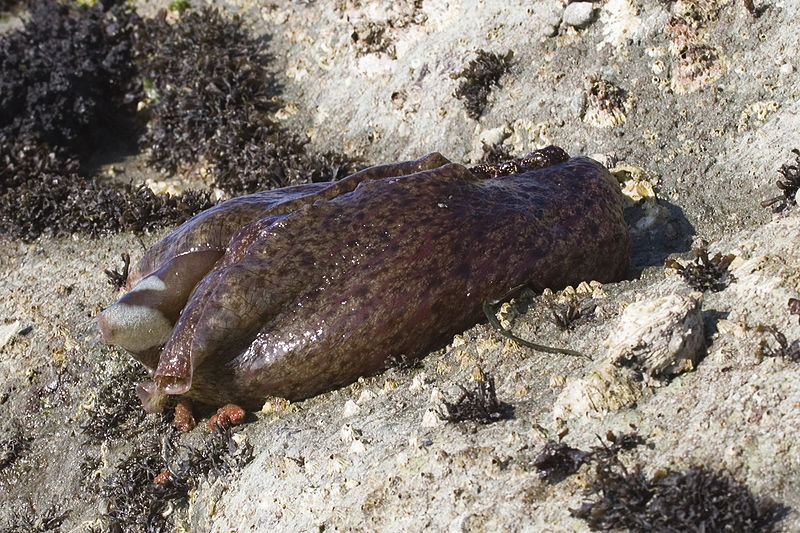
Photo credit: Mike Baird
As a follow-up to my first post about sea hares, here are seven cool sea hare facts:
1. Large wing-like flaps protect the gills and some species of sea hares use these flaps for swimming, duo-purpose wing-like flaps in those cases.
2. The two tentacle-like extensions on the top of the head that stick up like rabbit ears are called rhinophores, which means nose-bearing, and are used for detecting chemicals.
3. Sea hares are hermaphroditic, each animal is both male and female.
4. To facilitate mating, sea hares form a circle and then each animal inseminates the one in front. This group sex event has been dubbed a “Roman circle.”
5. A single sea hare can lay up to 500 million eggs during one breeding season.
6. Sea hares produce purple ink as a defense mechanism; this ink was used by Native Americans to dye clothing.
7. Biomedical researchers use the sea hare’s very simple nervous system as a model for other more complicated species. The neurophysiology of sea hares is being used in cancer research and sea hare sex hormones are providing clues to understanding more about human development. Who knew?
Thanks for sharing these Hare-raising information on these critters. Most interesting.
i think right now sea hares are very interesting.!!!!!!
Hi – I have a 65 gal reef tank (7 fish & a variety of corals). Using a red light at night allows me to view the inhabitants without disturbing them. Approx. 5 months ago I spotted a Sea Hare (approx. 1.24 inches long) in the tank. This evening, in addition to the larger creature a second and somewhat smaller one has been sighted.
Are they reef/coral safe, or should I remove them from the tank???
Your advise will be appreciated.
M.
Hi M- I’m not an expert on coral reef sea hares. The sea hares that live off California only eat algae, so I think your other animals are safe i.e. you don’t have to worry about them getting eaten by a sea hare. But please call your local aquarium supply store and ask the staff to be safe. Hopefully you will be able to keep them, sea hares are really neat animals!
Thanks for the notes, I needed them for a research project on an invertebrate, and I just happened to pick the sea hare! 🙂
same here
me too! mines a project about inter-tidal creatures. By the way what tidal zone do sea hares live in?
sea hares are amazing and why are both male and female how do they mate if they are both male and female???
They get in a breeding circle and each one mates with the one in front of it each one can lay 500 thoundnd eggs